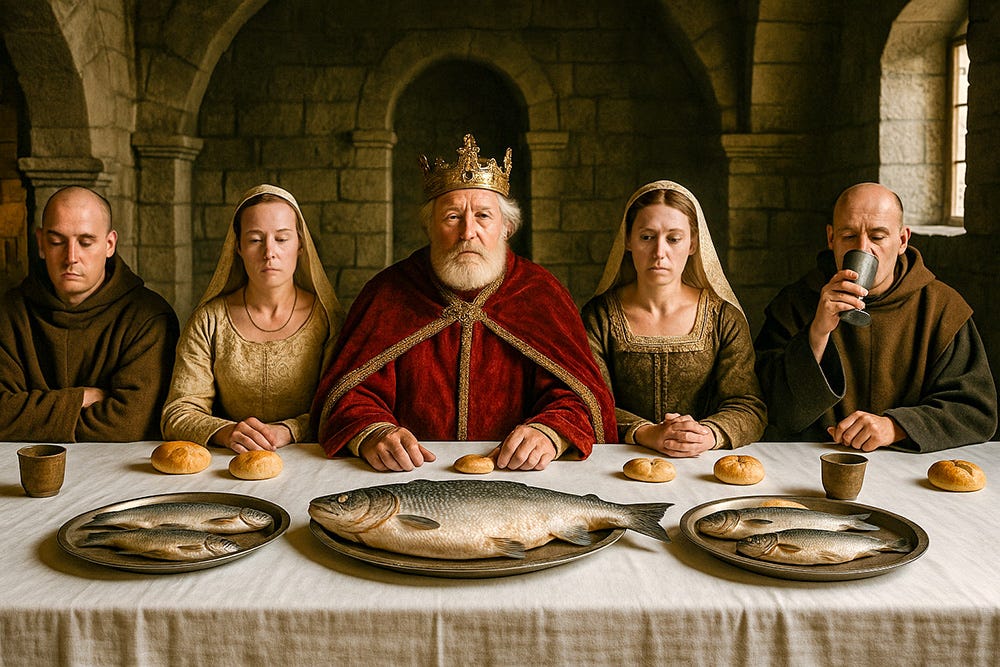The Medieval Table: Between Feasting and Fasting
How Lent Shaped the Way People Ate in the Middle Ages
Picture this: you’re a merchant in medieval France.
It’s February, and after weeks of indulgence—rich meats, thick sauces, and the occasional extravagant feast—it’s time for a drastic change.
The bells of the local church ring out a solemn reminder: Lent has begun.
No more meat, no more dairy, no more eggs.
And unless you have connections in high places (or a well-filled purse), there’s no getting around it.
Welcome to the great dietary reset of the Middle Ages.
Religious observances shaped almost every aspect of medieval life, and food was no exception.
The year was punctuated by alternating periods of feasting and fasting, creating a rhythm that dictated what people ate, how they cooked, and even how they saw food itself.
Lent wasn’t just a minor inconvenience—it was a defining period of medieval culinary culture.
So, let’s dive into the world of medieval tables, where faith, creativity, and the occasional loophole shaped the way people ate.
Lent and the Religious Framework of Eating
Keep reading with a 7-day free trial
Subscribe to French Moments Newsletter to keep reading this post and get 7 days of free access to the full post archives.





